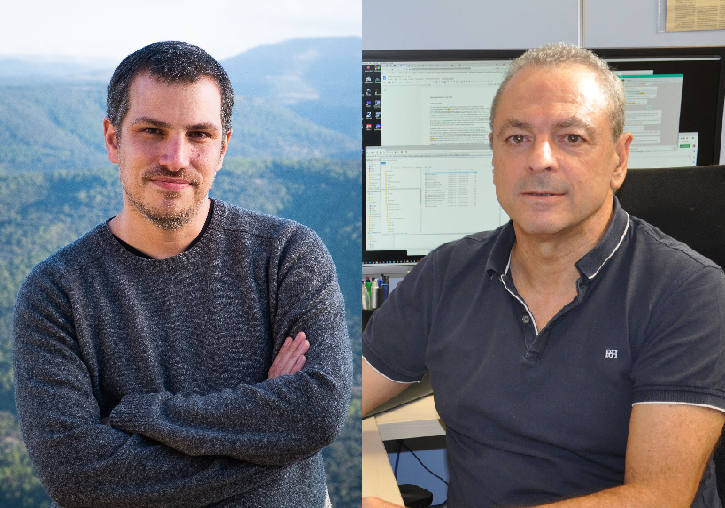
The University of Valencia (UV), the Foundation for the Promotion of Health and Biomedical Research of the Valencian Community (FISABIO) and the Spanish National Research Council (CSIC) have participated in an international research, published in the journal Nature, which explains how the SARS-CoV-2 variant initially detected in Spain became the predominant one in several European countries during 2020. The work, in which Fernando González (professor of Genetics at the University of Valencia and researcher of FISABIO) and Iñaki Comas (CSIC) participate belongs to the SeqCOVID consortium, which carries more than 17,000 sequenced virus samples.
The variant whose transmission is traced is the so-called 20E.EU1. Its mutation lies in a modification of the spicule protein, which is what allows SARS-CoV-2 to enter cells. The research was questioned because, without any evidence being found that this variation increases transmissibility, it ended up spreading to a dozen European countries.
Fernando González, also responsible for the Joint Research Unit in Infection and Public Health of the FISABIO Foundation-University of Valencia, explains that “this research provides relevant information on how the transmission of SARS-CoV-2 behaves and evolves, to which it is not essential that one variant is more transmissible than another to end up imposing itself in different countries, as well as on the actions that can be taken to limit its expansion”.
The evolutionary history of this variant indicates that it was most prevalent in Spain in July and August 2020. By the end of August, samples had already been sequenced in Belgium, Switzerland, France, Denmark, the United Kingdom, Germany, Latvia, Sweden, Norway and Italy. In addition, between August and October samples of this variant were detected in Hong Kong, Australia, New Zealand and Singapore, probably exported from Europe.
In mid-July, a month after the first sample was found in Spain, this variant already represented 80% of the sequenced samples in the country. Four months later, it was already in more than 60% of the samples from other countries such as Ireland, the United Kingdom or Italy.
The research points out that the causes of transmission across the European continent were the reactivation of travel between these countries and the lack of continence and stricter controls to keep the virus from spreading. This variant was predominant in Spain and other European countries until the end of last year began to extend the alpha variant (B.1.1.7 or also known as British), which has currently become the predominant one.
“From this work we can draw two main lessons. On the one hand, many important outbreaks occur in the most vulnerable groups, those who cannot be protected like the rest. Prevention in these groups would have prevented for example the initial expansion of the 20E/EU1 variant. On the other hand, mobility within and between countries in the summer shows us how a variant, which in itself is not transmissible, can become dominant in just a few months. We need to find the right balance between economy and prevention to avoid making the same mistakes in the summer of 2021. While we have now made much more progress in vaccination, we also face variants such as delta, which are more transmissible especially among not vaccinated people and those who only received one dose”, explains Iñaki Comas, researcher at the Institute of Biomedicine of Valencia (IBV), of the CSIC.
This article has been published in the prestigious international journal Nature and has been made possible through collective work in which institutions such as the University of Basel, the Federal Polytechnic School of Zurich and the SeqCOVID-Spain consortium have participated.
Tracking the evolution of the virus
The SeqCOVID consortium, led by the CSIC, is made up of different Spanish institutions, including FISABIO and the University of Valencia. Its aim is to follow the transmission and movement of viruses on a national scale, as well as to know their variants.
Since the constitution of the consortium, more than 17,000 samples have been sequenced. Of all of them, more than 11,000 have been sequenced by the research team of the FISABIO sequencing service.
Article: Hodcroft, E.B., Zuber, M., Nadeau, S. et al. «Spread of a SARS-CoV-2 variant through Europe in the summer of 2020». Nature (2021). https://doi.org/10.1038/s41586-021-03677-y











